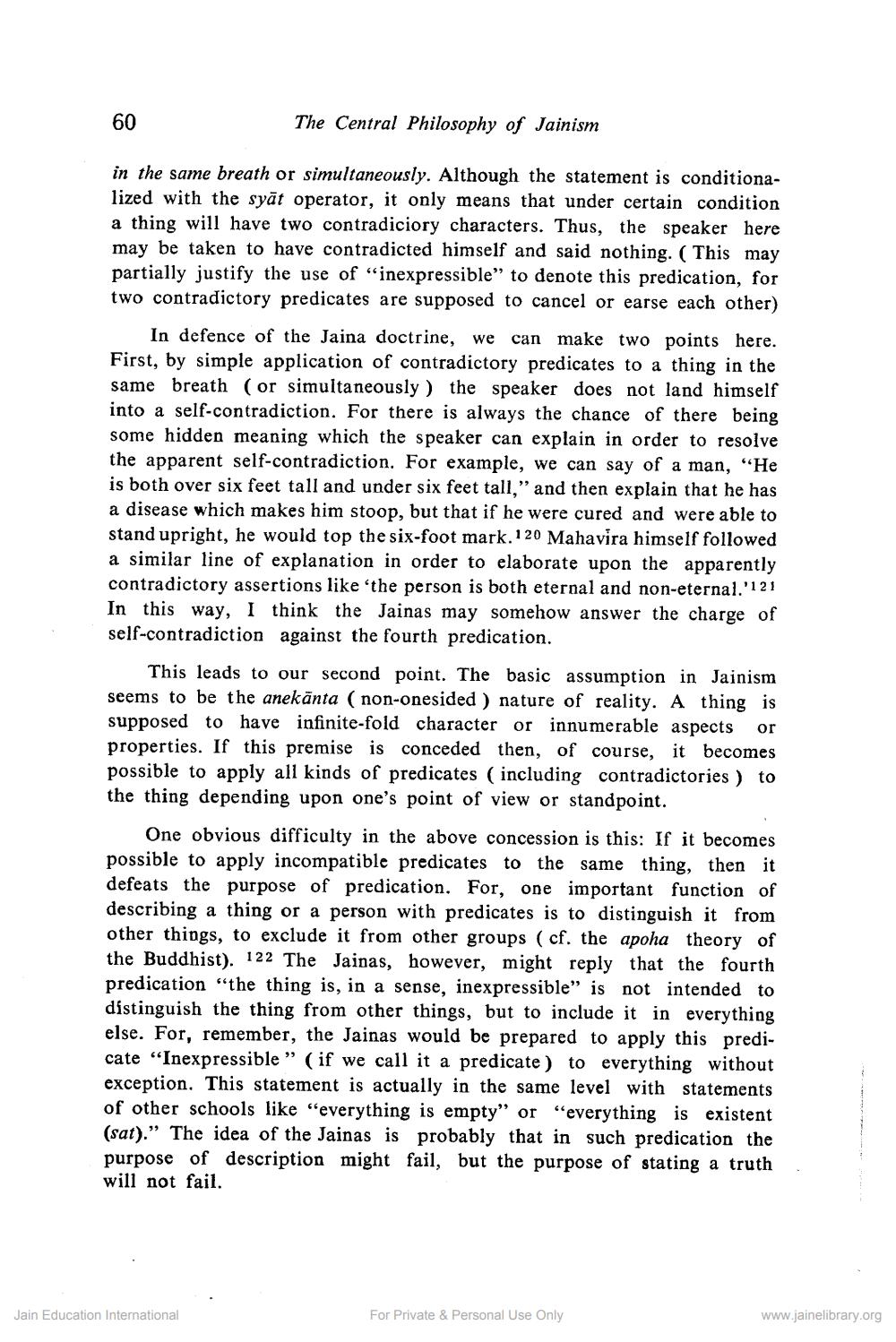________________
60
The Central Philosophy of Jainism
in the same breath or simultaneously. Although the statement is conditionalized with the syāt operator, it only means that under certain condition a thing will have two contradiciory characters. Thus, the speaker here may be taken to have contradicted himself and said nothing. (This may partially justify the use of "inexpressible" to denote this predication, for two contradictory predicates are supposed to cancel or earse each other)
In defence of the Jaina doctrine, we can make two points here. First, by simple application of contradictory predicates to a thing in the same breath (or simultaneously ) the speaker does not land himself into a self-contradiction. For there is always the chance of there being some hidden meaning which the speaker can explain in order to resolve the apparent self-contradiction. For example, we can say of a man, "He is both over six feet tall and under six feet tall," and then explain that he has a disease which makes him stoop, but that if he were cured and were able to stand upright, he would top the six-foot mark. 120 Mahavira himself followed a similar line of explanation in order to elaborate upon the apparently contradictory assertions like the person is both eternal and non-eternal.'121 In this way, I think the Jainas may somehow answer the charge of self-contradiction against the fourth predication.
This leads to our second point. The basic assumption in Jainism seems to be the anekānta (non-onesided ) nature of reality. A thing is supposed to have infinite-fold character or innumerable aspects or properties. If this premise is conceded then, of course, it becomes possible to apply all kinds of predicates (including contradictories ) to the thing depending upon one's point of view or standpoint.
One obvious difficulty in the above concession is this: If it becomes possible to apply incompatible predicates to the same thing, then it defeats the purpose of predication. For, one important function of describing a thing or a person with predicates is to distinguish it from other things, to exclude it from other groups (cf. the apoha theory of the Buddhist). 122 The Jainas, however, might reply that the fourth predication “the thing is, in a sense, inexpressible" is not intended to distinguish the thing from other things, but to include it in everything else. For, remember, the Jainas would be prepared to apply this predicate "Inexpressible” (if we call it a predicate) to everything without exception. This statement is actually in the same level with statements of other schools like "everything is empty" or "everything is existent (sat).” The idea of the Jainas is probably that in such predication the purpose of description might fail, but the purpose of stating a truth will not fail.
Jain Education International
For Private & Personal Use Only
www.jainelibrary.org




